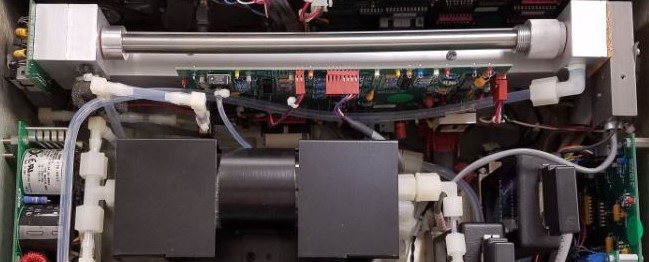
Calibrating ambient air monitors is vital for getting pollution monitoring right. Ambient air monitors can provide critical data about the health of our immediate atmosphere and what needs to change to improve air quality. Ozone transfer standards are a vital part of that process, ensuring air quality analyzers are calibrated and working effectively. To understand more about them, this post will discuss the advantages and disadvantages of ozone transfer standards.
What are Ozone Transfer Standards?
Ozone standards are described based on their relationship to a known standard, called a primary standard. Secondary ozone standards would be systems calibrated and verified to a primary standard, while tertiary standards are calibrated and verified to a secondary standard, and so on. Non-primary standards are used either in a lab setting (bench standard) or to calibrate equipment in the field (transfer standards) and must routinely be reverified to the higher level standard. Level, in this context, is a measure of reliability; so a higher level primary standard can be reliably verified. The vernacular can be confusing, but the Environmental Protection Agency (EPA) is attempting to consolidate the terms used into a more cohesive framework. Thus, primary standards are increasingly known as Level 1 standards while secondary standards are known as Level 2.
Advantages
Ozone transfer standards represent a robust framework when it comes to quality assurance and control (QA/QC). As there is a family of Level 1, Level 2, and Level 3 ozone transfer standards, it is possible to conduct robust, end-to-end process validation. Level 1 standards cannot be used in the field, but they are ideal for lab procedures and benchtop validation. Level 2 standards, meanwhile, can be used in a fixed location for certifying other standards, which can then be used to calibrate analyzers in the field.
Disadvantages
Because O3 transfer standards are highly complex, their reliability will always be questioned. To combat this problem, transfer standards must be qualified to prove their stability and accuracy. Each lower standard in a chain assumes a greater level of uncertainty, which will–at some point–fall below permissible limits.
Ozone Transfer Standards with Environics
Environics has a long history of manufacturing ozone calibration systems for ambient air monitoring. Environics S9100 is the unit of choice in the Air Quality Monitoring Programs of the EPA and California Air Resource Board (CARB). We understand the updated regulations, the importance of ozone transfer standards, and their place within ambient air monitoring. We have developed a series of gas mixing systems, transfer standards, and other instruments.
One such example is the Environics® Series 6123 Ozone Transfer Standard with Photometer. This is a powerful instrument for ozone monitoring and reporting, with a program developed to carry out automatic ozone calibrations.
The 6123 is a type of photometer that meets all requirements set out by the U.S Environmental Protection Agency for a level 3 transfer standard. Its included mass flow controller is calibrated to the NIST (National Institute of Standards and Technology) traceable primary standard. Another component of the 6123 is the ozone generator with a UV-based light source. The generator is temperature-controlled and runs on a photo-optical feedback circuit to support reliable ozone generation.
A summary of the key benefits and features include:
- Automatic leak test function
- Easy to use
- Error correction via closed-loop PID control
- Mass flow controlled calibrated at 11 points
- A photometer accurately measures the amount of ozone generated
- User-friendly software
Contact us today if you require more information about ozone transfer standards or are ready to purchase. Our team is always prepared to find you the most suitable solution.

